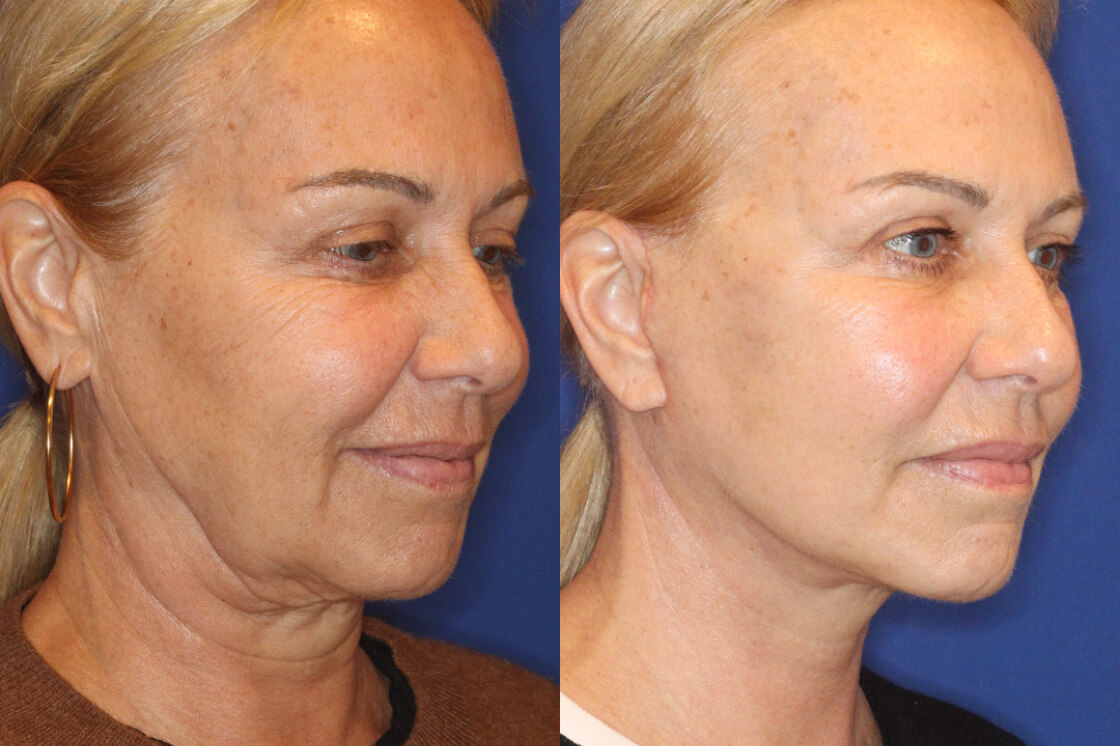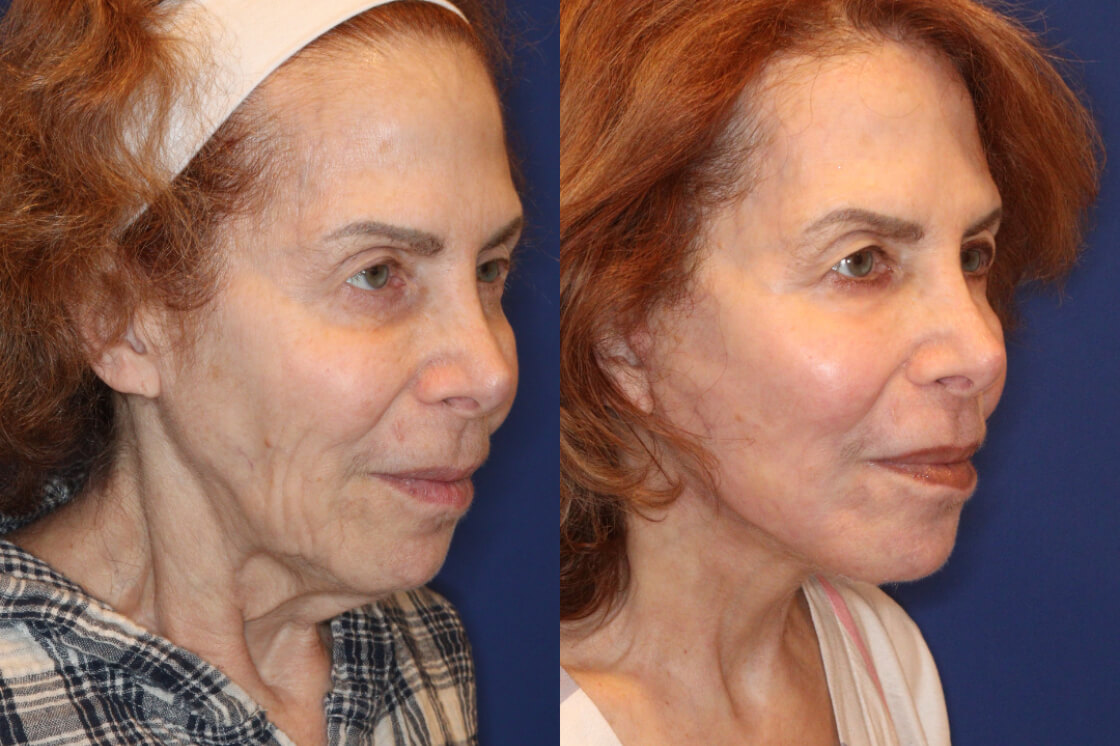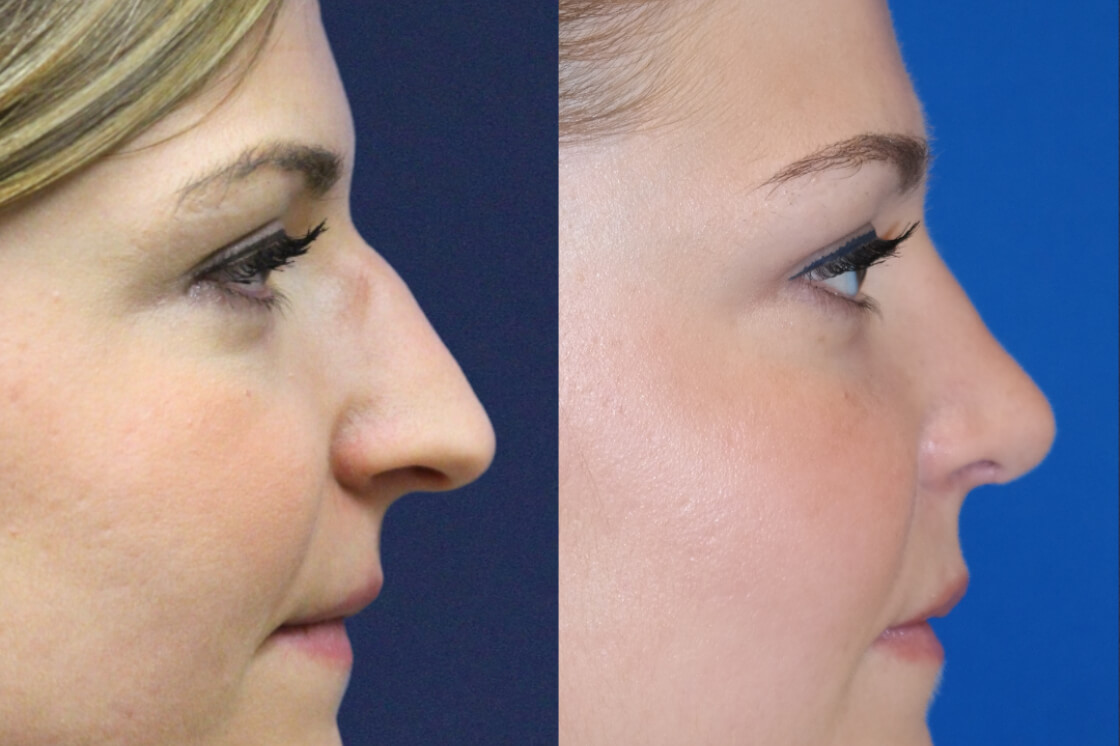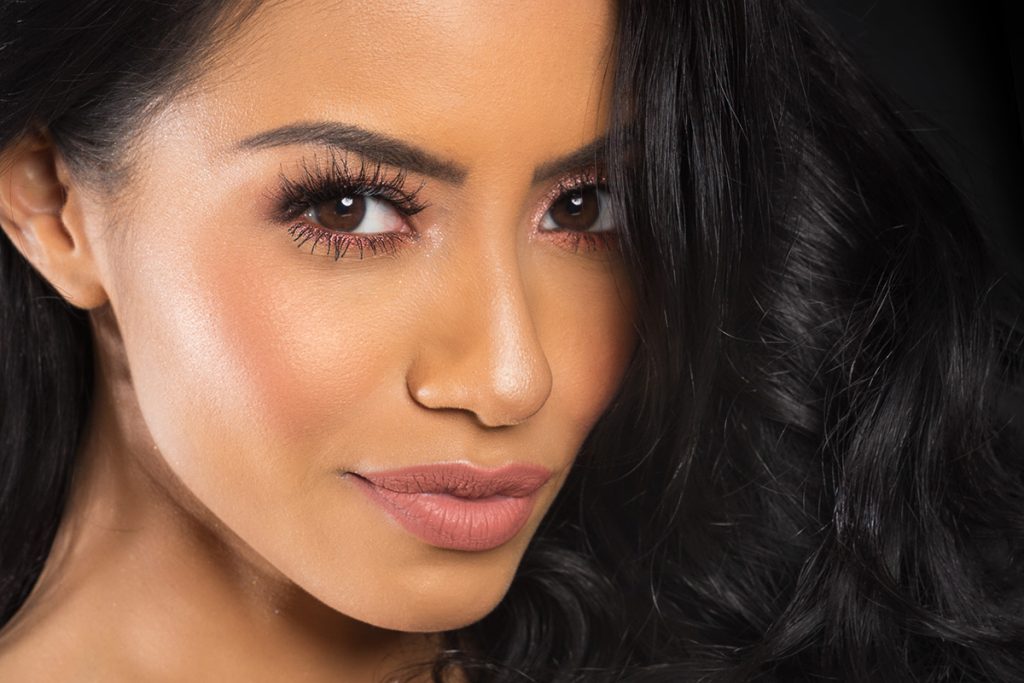A rhinoplasty, also known as a “nose job,” is a surgical procedure designed to improve the appearance and/or functionality of the nose. One of the most frequently asked questions during rhinoplasty consultations isn’t about results—it’s about technique. Specifically, patients want to know whether their surgery will be open or closed, and if one method is “better” than the other.
The answer depends on your anatomy, the changes being made, and the complexity of the case. Dr. Jennifer Levine, a double board-certified facial plastic surgeon in NYC, has performed thousands of rhinoplasty procedures using both techniques. She explains the key differences between them and the factors that guide the choice of approach.
Contents
What Is Open Rhinoplasty?
In open rhinoplasty, Dr. Levine makes a small incision across the columella, or the narrow strip of skin between the nostrils. This gives her a full view of the nasal structure and direct access to reshape cartilage with precision.
This approach is especially useful when:
- The nasal tip requires detailed work
- Structural grafts are needed
- The patient is undergoing revision surgery
- Asymmetry or collapse needs to be corrected
The incision itself is minor, and in most cases, it fades into a barely visible line beneath the nose. When patients express concern about scarring, Dr. Levine explains how tension-free closure, scar care, and time contribute to excellent healing. (1)
What Is Closed Rhinoplasty?
Closed rhinoplasty, also called endonasal rhinoplasty, is performed entirely through incisions inside the nostrils. There is no external scar. This technique is ideal for select cases, particularly when the changes are focused along the bridge or when tip support is already adequate.
Dr. Levine may recommend a closed approach when:
- Refinements are confined to the dorsal hump or bridge
- Tip modification is minimal
- The nose is relatively straight at baseline
Closed rhinoplasty leaves no external scar, but it requires careful technique and a deep understanding of nasal structure from the inside out. (2)
How Does Dr. Levine Decide Between Open and Closed Rhinoplasty?
In most cases, it’s not a question of which approach a patient prefers; it’s about what their anatomy needs and what the procedure calls for. During consultation, Dr. Levine evaluates both the external shape and the internal support of the nose. Skin thickness, cartilage strength, past trauma, and whether this is a first-time or revision surgery all factor into the decision.
Some cases make the choice clear, while others offer more flexibility. In either case, Dr. Levine’s goal is the same: to select the approach that allows for the most controlled, refined result.
Will One Approach Heal Faster Than the Other?
Closed rhinoplasty may lead to slightly less swelling in the first two weeks. However, total recovery time is influenced more by surgical complexity than incision location. An open approach using a gentle technique often heals faster than a more complicated closed procedure that requires work on the inside of the nose, like adding support structures.
Dr. Levine gives each patient a clear recovery timeline based on the specifics of their case. Regardless of the approach, patients should plan for dedicated time to prioritize rest and healing.
Does One Technique Look More Natural?
Both techniques can produce refined, natural-looking results. When it comes to open vs. closed rhinoplasty, the surgeon’s skill, technique, and ability to make careful, thoughtful decisions are what shape the results.
Dr. Levine has performed both open and closed rhinoplasty for over two decades. Her choice of technique is always about achieving the best result for that particular face, structure, and aesthetic preferences.
What Patients Should Know
What determines the success of a rhinoplasty isn’t the absence of a scar or the speed of recovery. It’s how well the nose functions, how it complements the rest of the face, and how precisely the plan was carried out.
Dr. Levine always chooses the approach that gives her the access, control, and subtlety needed to deliver a lasting result—one that fits you, not a trend or technique.
Let’s get started.
Schedule a rhinoplasty consultation to learn which approach is right for you.
References
- Raggio BS, Asaria J. Open Rhinoplasty. PubMed. Published 2021. https://www.ncbi.nlm.nih.gov/books/NBK546628/
- Rad AN, Bridges MA, Constantian MB. The Principles and Practice of Endonasal Rhinoplasty: Special Topics for Clinics in Plastic Surgery Journal. Clinics in plastic surgery. 2022;49(1):33-47. doi:https://doi.org/10.1016/j.cps.2021.07.004





